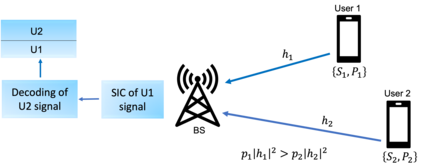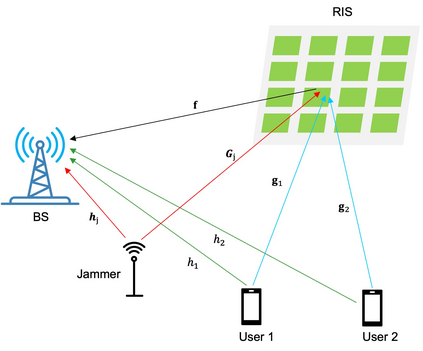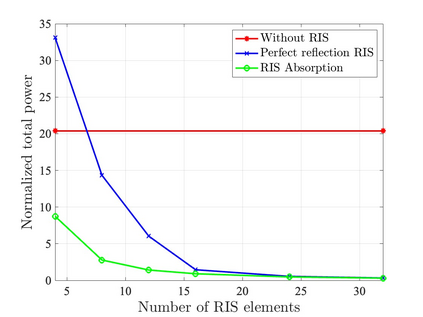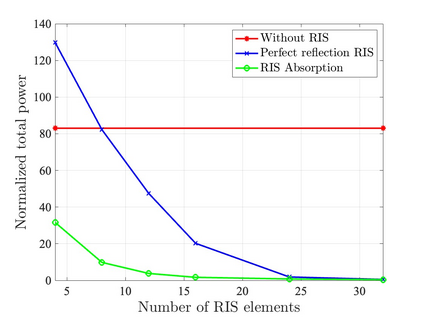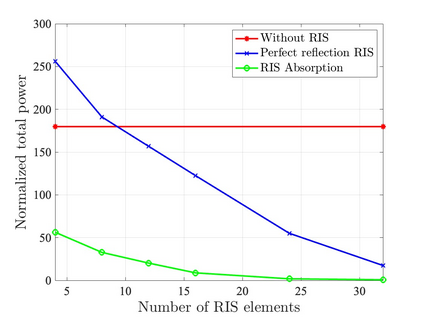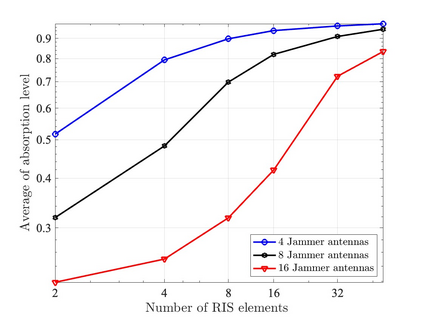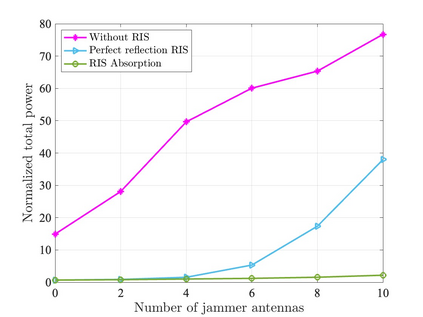Non-orthogonal multiple access (NOMA) has become a promising technology for next-generation wireless communications systems due to its capability to provide access for multiple users on the same resource. In this paper, we consider an uplink power-domain NOMA system aided by a reconfigurable intelligent surface (RIS) in the presence of a jammer that aims to maximize its interference on the base station (BS) uplink receiver. We consider two kinds of RISs, a regular RIS whose elements can only change the phase of the incoming wave, and an RIS whose elements can also attenuate the incoming wave. Our aim is to minimize the total power transmitted by the user terminals under quality-of-service constraints by controlling both the propagation from the users and the jammer to the BS with help of the RIS. The resulting objective function and constraints are both non-linear and non-convex, so we address this problem using numerical optimization. Our numerical results show that the RIS can help to dramatically reduce the per user required transmit power in an interference-limited scenario.
翻译:非垂直多重存取(NOMA)已成为下一代无线通信系统的一个有希望的技术,因为它有能力在同一资源上为多个用户提供存取机会。 在本文中,我们考虑的是由可重新配置的智能表面(RIS)协助的合成智能表面(RIS)协助的上链路NOMA系统,目的是最大限度地最大程度地干扰基站(BS)上链路接收接收器。我们考虑的是两种类型的RIS,一种是常规的RIS,其元素只能改变新波的阶段,一种是常规的RIS,其元素也可以减轻新波。我们的目的是通过控制用户和干扰器在RIS的帮助下向BS的传播,最大限度地减少用户终端在服务质量限制下传输的全部能量。由此产生的客观功能和限制是非线性和非电离子,因此我们用数字优化来解决这个问题。我们的数字结果显示,RIS可以帮助大幅降低用户在受干扰的情况下所需的传输能力。

